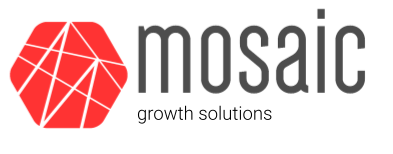Scaling growth quickly is a challenge facing an increasing number of companies. Start ups, mid-growth, and well-established corporations alike need more than just growth; fast growth is required as investors and stakeholders are no longer comfortable waiting patiently as the business lays a foundation for long-term growth without any quick wins upfront. In other words, speed matters and we hear that loud and clear from executives that we work with at both young organizations that are entering the growth phase for the first time as well as with more established brands that need to prove relevancy and a sustainable business model. However, while the focus on fast growth is there, we observe these same mistake among all of these executives – they are falling back on traditional strategic planning methods and long held organizational beliefs to drive this growth. The reality is that fast growth requires a cultural shift, a new set of principles. That’s where #FASTgap comes in.
What is #FASTgap?
#FASTgap is a focused, actionable, scalable, trackable (FAST) growth action plan (GAP) that leads to results. It differs from a traditional strategic plan because it honestly and very specifically answers the critical question: how will our company realize fast growth while also maintaining agility to respond to changes and scalability to drive long-term impact?
Here is a simple analogy to help highlight the difference between a traditional strategic plan and a growth action plan. A strategic plan is like a good old paper map with your point of departure and point of arrival circled and nothing else – no suggested routes, no estimated time of arrival (ETA), no indication of the landmarks you should see along the way. Each executive has her own car and map, with the hope that somehow they will all arrive at the desired destination at the exact same time. On the other hand, a GAP is like a modern-day GPS. It provides both an overview of the optimal route as well as detailed turn-by-turn directions. Most importantly, it maintains the ability to respond to changes in road conditions or traffic patterns in real-time, suggesting alternate routes as needed. Do you want the paper map or dynamic GPS? Let’s take a closer look at what makes the GAP FAST.
Focused: Does everyone know where they are going and what route to take? There are usually several ways to drive growth within a company, especially in organizations just entering the growth phase. The key to fast growth is identifying the paths that deliver most efficiently – biggest impact in the shortest time with the least amount of incremental investment. To do this, organizations must uncover what is working by looking at the data (not based upon executive “gut” or anecdote) And, almost slightly more critical is that this also requires organizations to stop doing what is not working. This seems trite but it is unbelievable how many organization we work with continue to expend energy and resources on areas of the business that will never produce tangible results.
Actionable: Is everyone ready for the drive – the estimated duration, the potential change in ETA, the possibility of re-routing, etc? In order for a plan to be actionable, it must pass what Mosaic refers to as the “4R’s test”:
- Is the plan realistic? In order for a plan to be actionable, it must be achievable given internal capabilities, competitive dynamics, and market trends. Before committing to a GAP, an organization must honestly assess whether it has the resources (technology, money, talent) to execute upon it flawlessly.
- Is the organization ready? There must be buy-in on the strategy, at all levels of the organization,in order for a GAP to drive results. Any doubt or misalignment must be surfaced and worked through before starting. There also needs to be a readiness and willingness to pivot if results are not aligned with expectations. Too often organizations feel the need to “stick with the plan” for much longer than they should.
- Are roles and responsibilities clear? There should be clear ownership and accountability for every piece of the GAP. A shared methodology for tracking progress against their respective pieces is critical – everyone should be using the same KPIs and the same yardstick .
Scalable: Does everyone have enough gas (and snacks) to get to the final destination safely? Scaling growth means that you can sustain growth over an extended period of time. In the case of fast growth, it is identifying which efficient growth strategies are is working and then using existing organizational assets (Read our blog post on how to identify these assets here) to do more of it – test, fail, optimize, scale. If your company is spending all of its available energy and resources to achieve fast growth, then you don’t have a scalable plan.
Trackable: How is the drive going and has anything changed – driving conditions, optimal route, ETA, etc? Discipline around tracking and reporting results plays two major roles in successfully executing a GAP. Obviously, it quickly surfaces whether a strategy is working or not. But this is also the critical tool to maintain accountability, one of the most important factors in determining whether a GAP will be successful.
How To Get Started Using #FASTgap Principles
- Conduct an Honest Internal Assessment – This exercise should be intense and difficult; it should reveal what is working and what is not. It should shed light upon unique organizational assets as well as surface areas of vulnerability and should form the basis of your GAP.
- Create a vision – Develop a fast growth vision that is capitalizes on your assets and what is already working. This is the key to efficient growth – you can’t start from scratch; it is too costly, time-consuming, and wasteful.
- Gain Organizational Alignment – Executives across the business must be aligned and clearly articulate on the company’s fast growth vision. The leadership has to work through any difference of opinion and be 100% bought into the vision, which will serve as a North Star across the entire organization, s a checkpoint for planning and prioritization decisions, and a ‘limiter’ to maintain organizational focus.
- Identify Your Efficient Growth Strategy – Now that you know where your business is going and what assets and challenges you have, you are ready to build a GAP. The plan should be realistic, executable, measurable, and agile – it will evolve and change based on new data, changing business needs, external factors, etc. Make sure you:
- Plan for change!
- Set your goals and work backwards to make sure your plan is realisitic
- Test those areas with the highest rewards and risks first
- Iterate your plan
- Maintain FASTgap principles throughout the process


Recent Comments